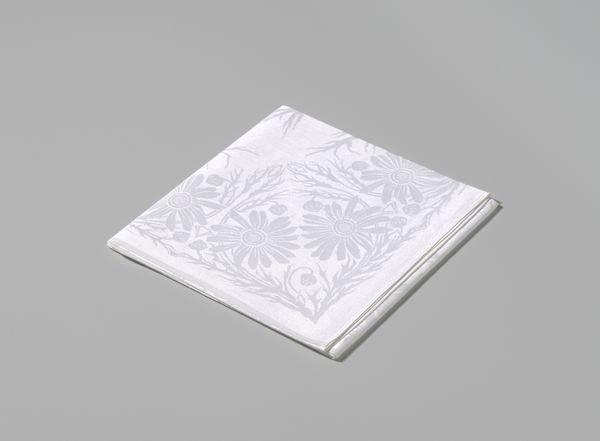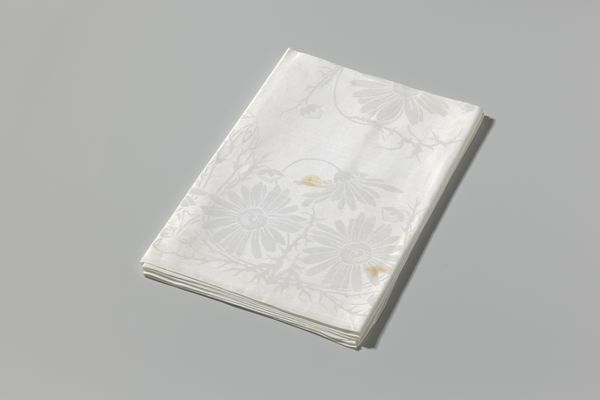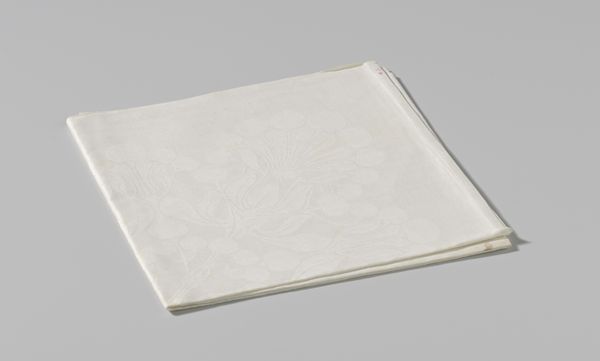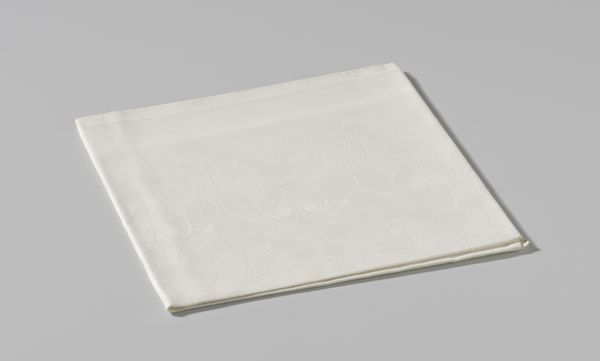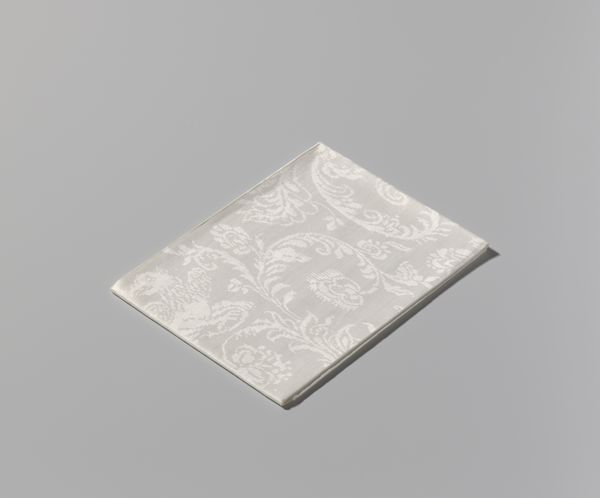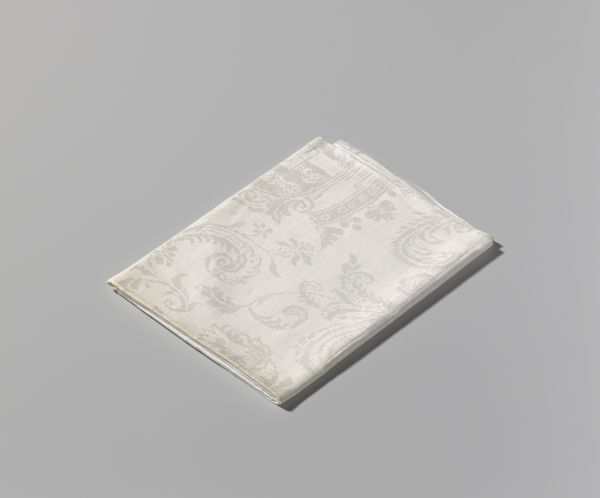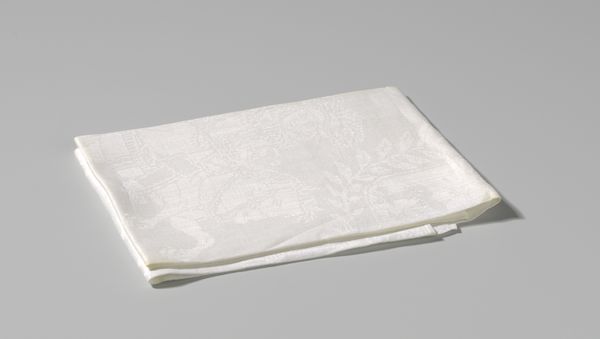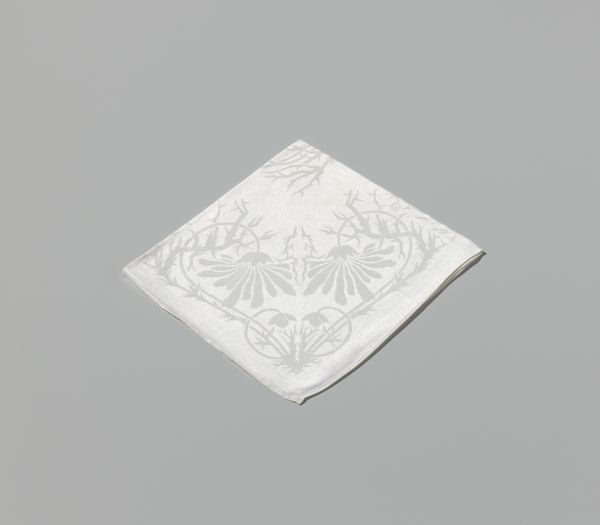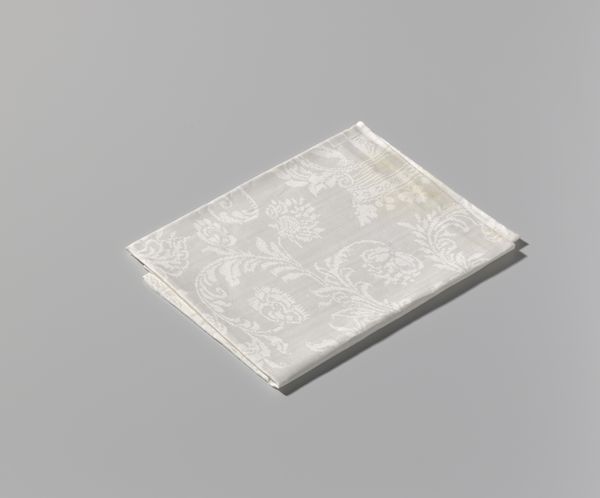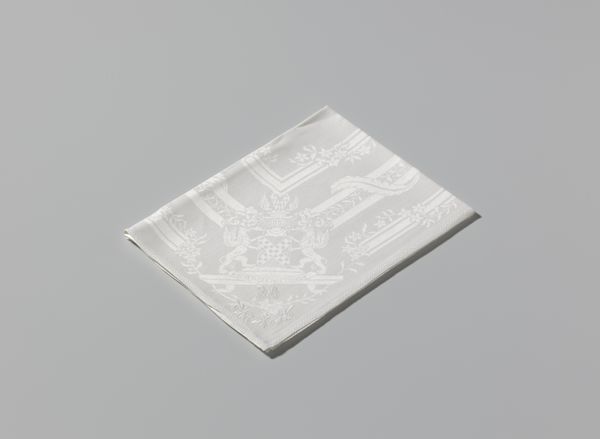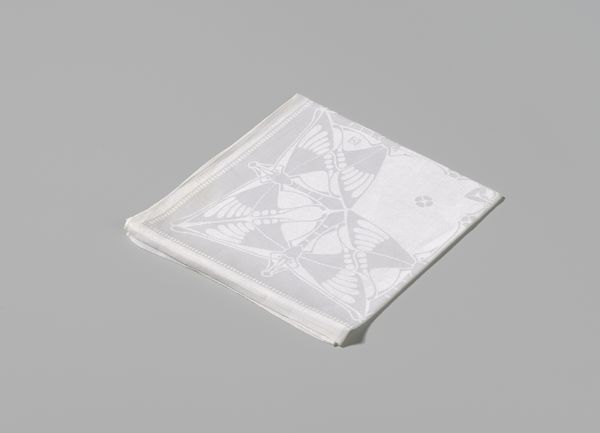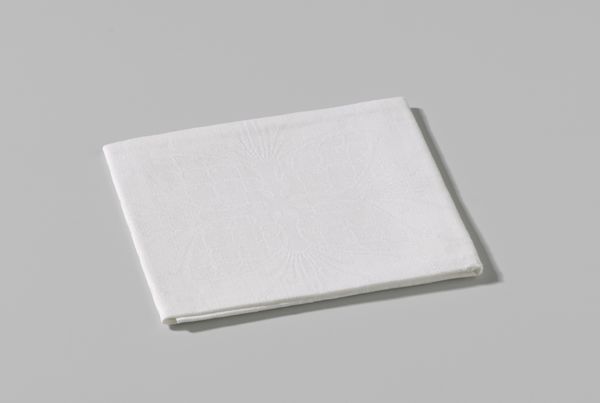
weaving, textile
#
art-nouveau
#
weaving
#
textile
#
decorative-art
Dimensions: length 71 cm, width 70 cm
Copyright: Rijks Museum: Open Domain
Editor: Here we have "Servet van linnendamast met dessin Marguerite," or Linen Damask Napkin with Marguerite Design, from around 1904. It's a weaving or textile piece. It’s so delicate, and that intricate floral pattern gives it a lovely, subtle elegance. What do you make of it? Curator: Well, looking at the means of production, linen damask represents a specific kind of textile industry. We're talking about specialized looms, skilled labor… Consider the material itself: linen. It suggests a certain class, doesn’t it? This wasn’t mass-produced nylon; this was a valued material, and damask weaving even more so. Editor: That makes sense. I hadn’t thought about the class implications so directly, just the visual. Does the Art Nouveau style further pinpoint that social context? Curator: Exactly! Art Nouveau was often embraced by the burgeoning middle class who wanted to display their, well, material success, right? Think about it. How much labor was required to create just one napkin? The very existence of decorative, non-essential objects points to certain economic conditions. Editor: So, it's not just a pretty floral pattern. It also tells a story about who could afford this kind of luxury and the complex production process behind it. I guess I’m viewing weaving with a fresh eye now. Curator: Precisely. By considering the production of items like these we question traditional art boundaries. Weaving is laborious craft as well as art! Think about where these flowers might have been cultivated for dye, and who picked them, carded, spun, dyed the fabric, designed the pattern. It's an ecological footprint! Editor: I appreciate you contextualizing what goes into its materiality, and its implications, because now I won’t just consider it as surface and style anymore. Curator: My pleasure, it is good to examine these lovely and historical objects from new angles!
Comments
No comments
Be the first to comment and join the conversation on the ultimate creative platform.
